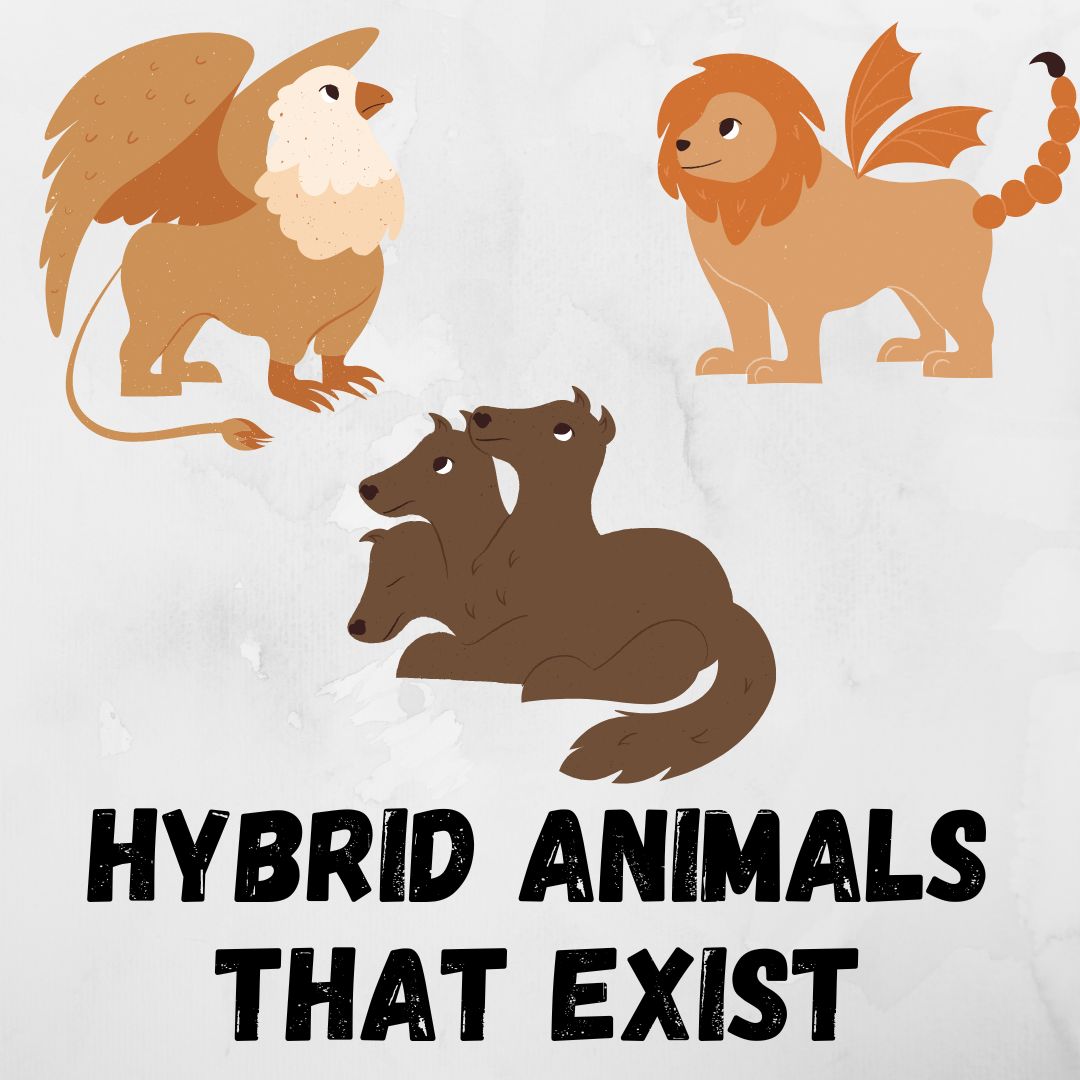The natural world is full of wonders, and one of its most intriguing aspects is the occasional occurrence of hybrid animals – creatures born from the union of two distinct species. While true hybrids are relatively rare in the wild, human intervention and selective breeding have led to the creation of some epic and unusual combinations. In this comprehensive article, we will delve into the captivating realm of hybrid animals, exploring their origins, characteristics, and the unique features that make them truly extraordinary.
Post Contents
- 25 Epic Hybrids: Exploring the Fascinating World of Interbreeding
- 1. Zubron: The Majestic Fusion of Cow and Bison
- 2. Beefalo: Bridging the Gap Between American Bison and Bull
- 3. Dzo: The Hardy Blend of Cow and Wild Yak
- 4. Cama: The Unique Union of Llama and Camel
- 5. Coywolf: The Wild Blend of Coyote and Wolf
- 6. Wholphin: The Marine Symphony of Dolphin and False Killer Whale
- 7. Narluga: The Arctic Elegance of Narwhal and Beluga Whale
- 8. Zorse: The Equine Harmony of Zebra and Horse
- 9. Zonkey: The Equine Fusion of Donkey and Zebra
- 10. Hinny: The Equine Harmony of Donkey and Horse
- 11. Liger: The Majestic Blend of Tiger and Lion
- 12. Tigon: The Majestic Blend of Lion and Tiger (Reverse Cross)
- 13. Leopon: The Majestic Blend of Lion and Leopard
- 14. Jaglion: The Enigmatic Blend of Lion and Jaguar
- 15. Savannah Cat: The Domestic Elegance of Cat and African Serval
- 16. Grolar Bear: The Arctic Fusion of Polar Bear and Brown Bear
- 17. Geep: The Adorable Fusion of Goat and Sheep
- 18. Green Sea Slug: The Marvelous Blend of Algae and Slug
- 19. Mulard: The Culinary Fusion of Pekin and Muscovy Duck
- 20. Bengal Cat: The Domestic Elegance of Asian Leopard Cat and Domestic Cat
- 21. Cheetoh: The Sleek Fusion of Bengal Cat and Ocicat
- 22. Humpless Llama: The Unique Variation of Domestic Llama
- 23. Mule: The Iconic Fusion of Donkey and Horse
- 24. Toyger: The Domestic Elegance of Bengal Cat and Domestic Cat
- 25. Wolfdog: The Enigmatic Fusion of Wolf and Domestic Dog
- 26. Zebroid: The Equine Fusion of Zebra and Horse
- Summary
- (FAQs) About Hybrid Animals Blends
25 Epic Hybrids: Exploring the Fascinating World of Interbreeding
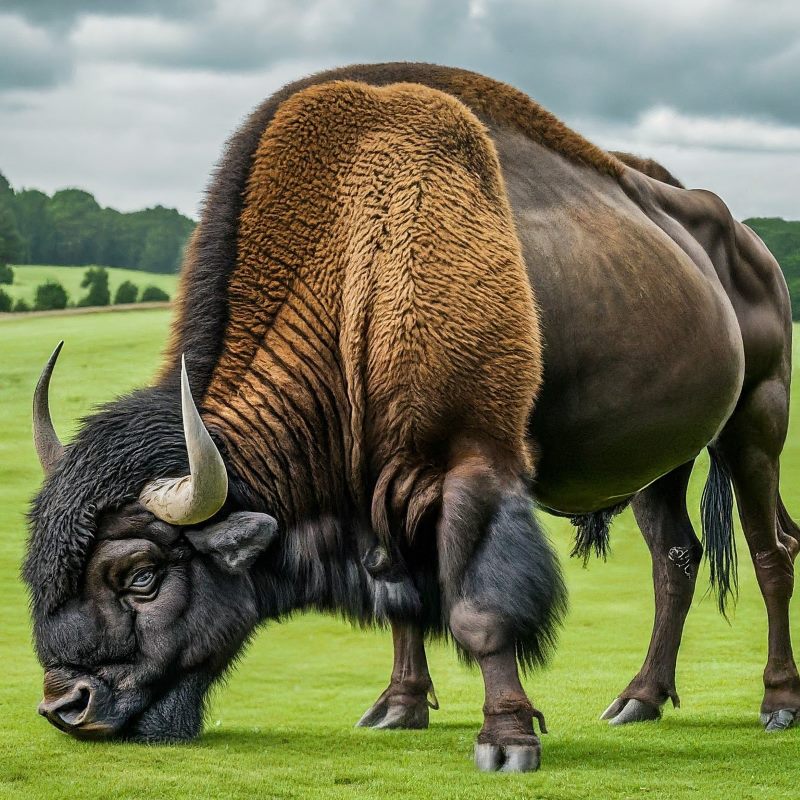
1. Zubron: The Majestic Fusion of Cow and Bison
The Zubron is a striking hybrid resulting from the crossbreeding of a domestic cow (Bos taurus) and a European bison (Bison bonasus). Also known as “Zubr” or “Żubroń,” this hybrid exhibits a blend of characteristics from both parent species. Originating in Poland during the 19th century, the Zubron was created with the goal of combining the domestication traits of cows with the hardiness and adaptability of bison.
Zubrons display a robust build, with the hump characteristic of bison and a coat that varies in color, often resembling a mix of the cow’s pattern and the bison’s darker hue. These hybrids have been bred for their potential to thrive in harsh environments, making them suitable for conservation and ecological management initiatives. Despite their hybrid status, Zubrons exemplify the harmonious integration of traits from two distinct species, showcasing the possibilities that arise from selective breeding.
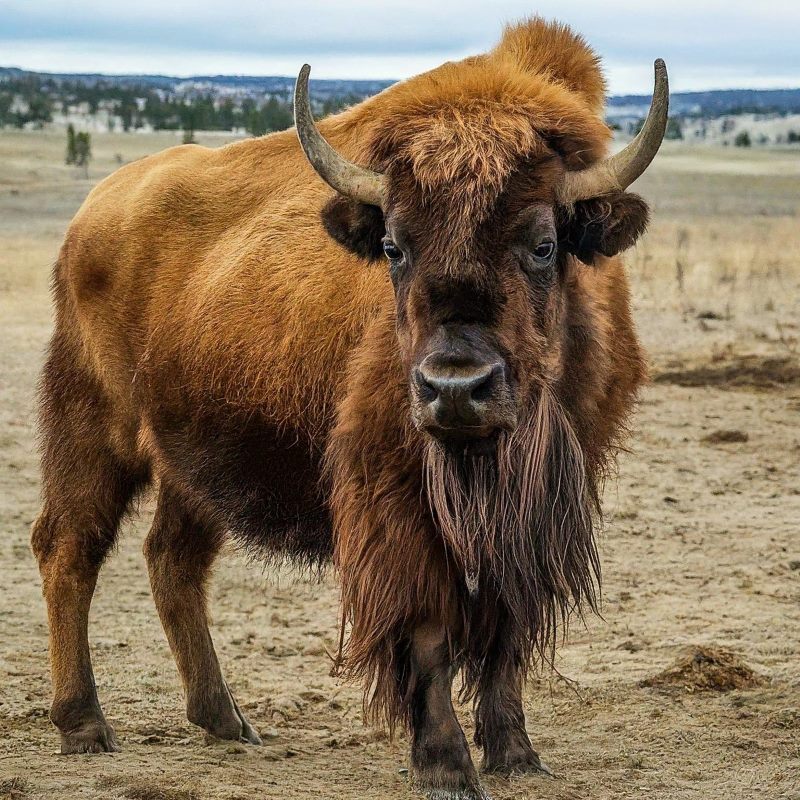
2. Beefalo: Bridging the Gap Between American Bison and Bull
A true icon of interbreeding, the Beefalo is a hybrid born from the union of an American bison (Bison bison) and a domestic bull (Bos taurus). This crossbreeding was initially pursued to create animals with the meat quality of domestic cattle and the resilience of wild bison. The result is a remarkable hybrid that has become an integral part of the agricultural landscape.
Beefalos typically exhibit the physical characteristics of both parent species, featuring the hump and shaggy coat reminiscent of bison alongside the general build and coloration of domestic cattle. Bred primarily for their meat, Beefalos combine the lean qualities of bison meat with the familiar taste of beef. This hybridization serves as a testament to human ingenuity in manipulating genetic traits to meet specific needs, contributing to the diverse and evolving world of agriculture.
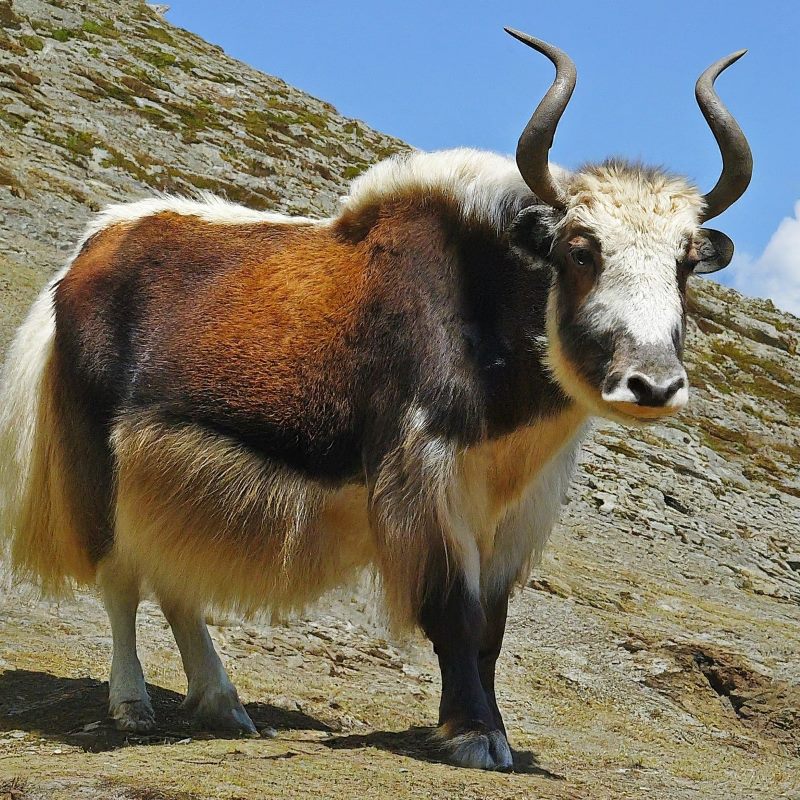
3. Dzo: The Hardy Blend of Cow and Wild Yak
The Dzo, also known as “Dzomo” or “Zhom,” is a hybrid resulting from the crossbreeding of a domestic cow (Bos taurus) with a wild yak (Bos mutus). This intriguing fusion of bovine species combines the domestication traits of the cow with the hardiness and adaptability of the wild yak, creating an animal well-suited for challenging environments.
Dzos often exhibit physical characteristics such as a robust build, a hump reminiscent of the yak, and a thick coat adapted to colder climates. Bred primarily for their strength and endurance, Dzos are commonly used as pack animals in regions where the challenging terrain demands animals with exceptional resilience. This hybridization highlights the potential for creating animals that can thrive in diverse ecological niches through selective breeding and the blending of traits from domestic and wild counterparts.
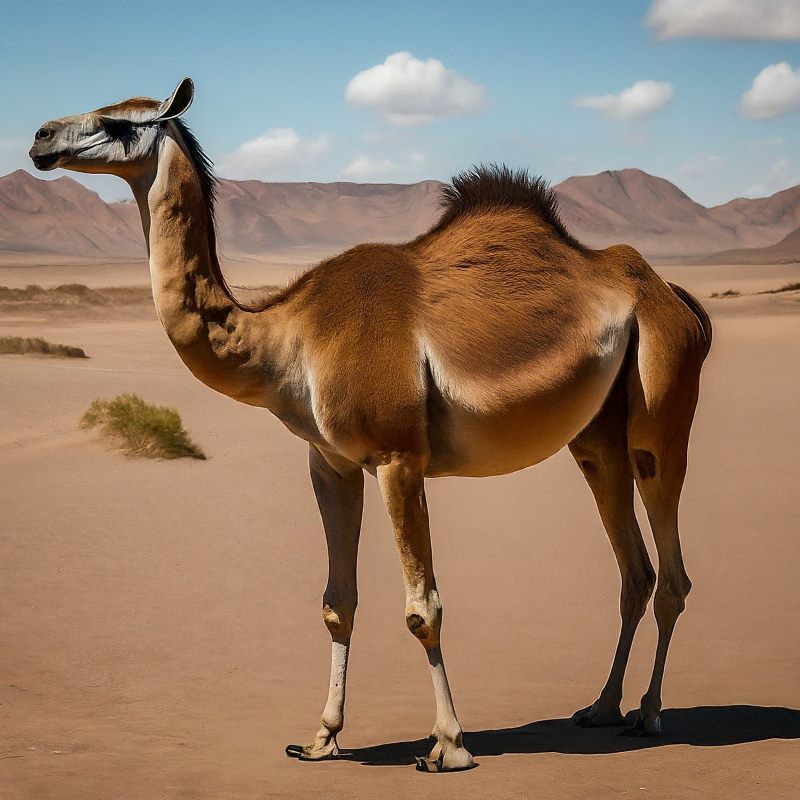
4. Cama: The Unique Union of Llama and Camel
The Cama is a hybrid resulting from the crossbreeding of a female llama (Lama glama) and a male camel (Camelus dromedarius). This unusual pairing combines two distinct species from different geographical regions, resulting in a hybrid with a mix of traits from both llamas and camels. The creation of the Cama is often achieved through artificial insemination due to the significant size difference between llamas and camels.
Physically, Camas often exhibit a combination of the long neck and humped back characteristic of camels, as well as the woolly coat and smaller stature of llamas. Bred for their potential in wool production and as pack animals, Camas showcase the adaptability that can arise from the intentional blending of traits from diverse species. While relatively rare, these hybrids exemplify the versatility that can be achieved through human-guided crossbreeding efforts.
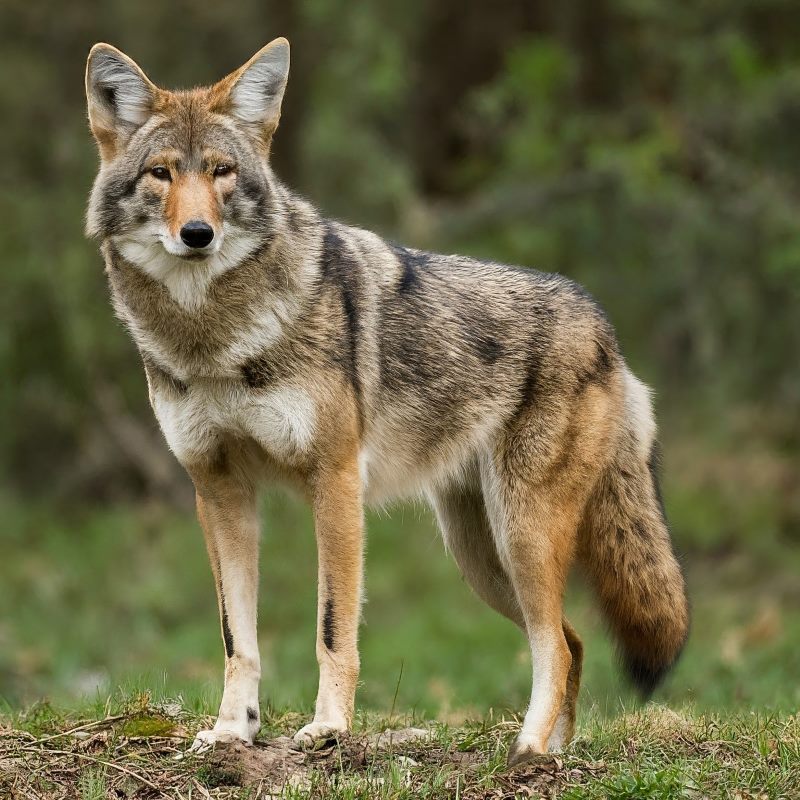
5. Coywolf: The Wild Blend of Coyote and Wolf
The Coywolf, also known as the Eastern Coyote, is a hybrid resulting from the interbreeding of coyotes (Canis latrans) with eastern wolves (Canis lycaon) or gray wolves (Canis lupus). This fascinating fusion of two canid species has become more prevalent in recent years, particularly in regions where human activities have altered natural habitats and brought coyotes and wolves into closer proximity.
Coywolves exhibit a range of physical traits that reflect their hybrid ancestry, including a size and build that falls between that of a typical coyote and a wolf. With a mix of coyote-like and wolf-like features, these hybrids have adapted to diverse environments, displaying a level of resilience that enables them to thrive in urban, suburban, and wild landscapes. The Coywolf serves as a testament to the dynamic nature of wildlife interactions in response to changing ecological conditions.
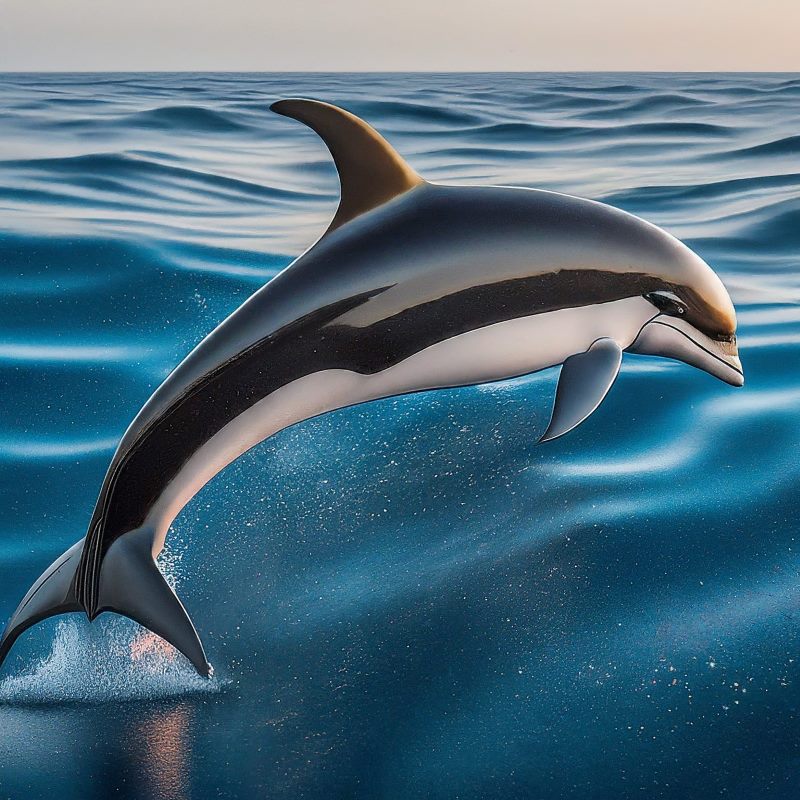
6. Wholphin: The Marine Symphony of Dolphin and False Killer Whale
The Wholphin is a captivating hybrid resulting from the crossbreeding of a bottlenose dolphin (Tursiops truncatus) and a false killer whale (Pseudorca crassidens). Known for their playful and social nature, Wholphins have been observed in both captivity and the wild, showcasing a blend of characteristics from their dolphin and false killer whale parentage.
Physically, Wholphins often display a streamlined body, a prominent dorsal fin, and a coloration that combines elements of both parent species. These hybrids are notable for their intelligence and adaptability, traits inherited from their dolphin ancestry. The occurrence of Wholphins highlights the potential for interspecific breeding in marine environments and provides valuable insights into the complex social behaviors of these intelligent marine mammals.
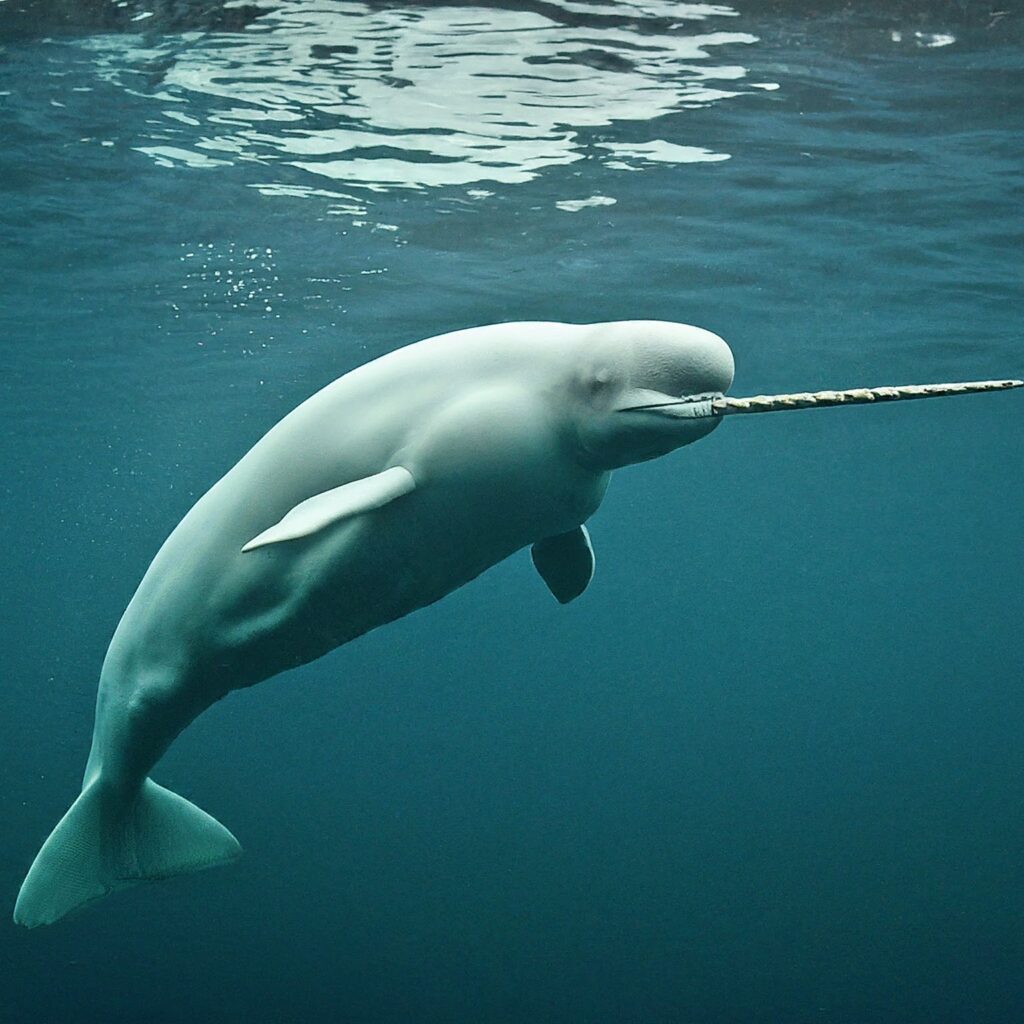
7. Narluga: The Arctic Elegance of Narwhal and Beluga Whale
The Narluga, a rare and enigmatic hybrid, is the result of the interbreeding between a narwhal (Monodon monoceros) and a beluga whale (Delphinapterus leucas). These Arctic cetaceans, with their distinctive tusks and melon-shaped heads, come together in a unique blend of characteristics that define the Narluga.
Physically, Narlugas often display a combination of traits such as a shorter tusk compared to a narwhal, a rounded head reminiscent of a beluga, and a coloration that reflects elements from both parent species. While the occurrence of Narlugas is rare, their presence emphasizes the interconnectedness of marine ecosystems and the potential for genetic exchange between closely related species in the frigid waters of the Arctic.
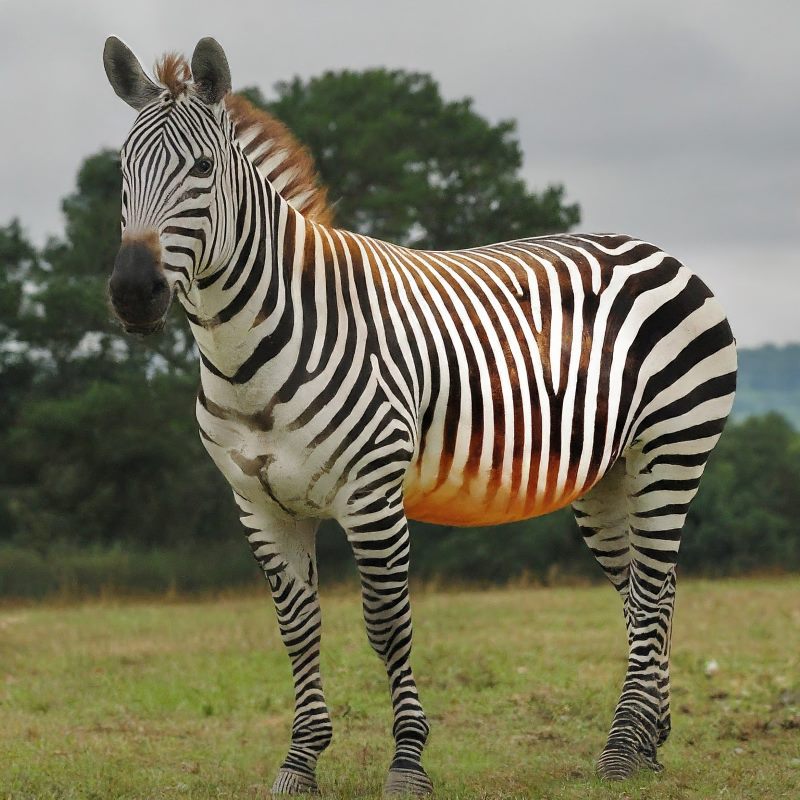
8. Zorse: The Equine Harmony of Zebra and Horse
The Zorse is a captivating hybrid resulting from the crossbreeding of a zebra (Equus zebra) and a horse (Equus ferus caballus). With its distinctive striped coat and equine features, the Zorse exemplifies the intriguing blend of characteristics from two related but distinct species.
Physically, Zorses typically display the body shape and size of a horse, combined with the striking black and white stripes reminiscent of a zebra. Bred for their unique appearance, Zorses showcase the possibilities that arise from the combination of traits through selective breeding. While the occurrence of Zorses is relatively uncommon in the wild, their presence in captivity highlights the diversity that can emerge when different equine species are brought together.
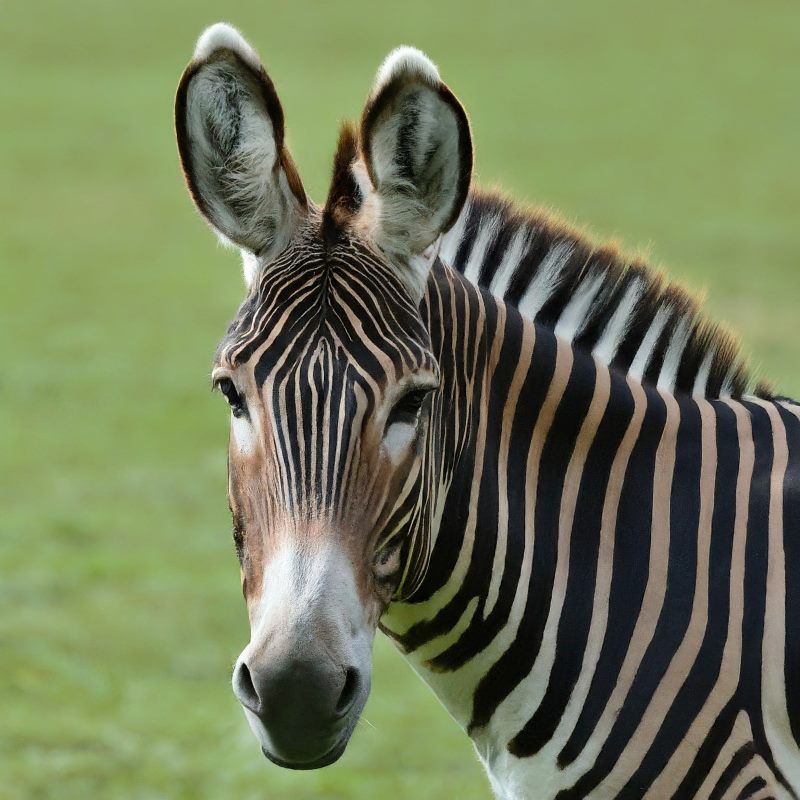
9. Zonkey: The Equine Fusion of Donkey and Zebra
The Zonkey, also known as a zedonk or zebrass, is a hybrid resulting from the crossbreeding of a zebra and a donkey (Equus africanus asinus). This charming equine fusion showcases a mix of the traits that define both zebras and donkeys, creating a creature with a unique and eye-catching appearance.
Physically, Zonkeys often exhibit the general build and size of a donkey, combined with the distinctive striped patterns characteristic of zebras. Bred primarily for their novelty and appearance, Zonkeys serve as a testament to the diversity that can emerge through intentional crossbreeding efforts within the equine family. While they may be rare in the wild, the presence of Zonkeys in captivity adds a touch of whimsy to the world of hybrid animals.
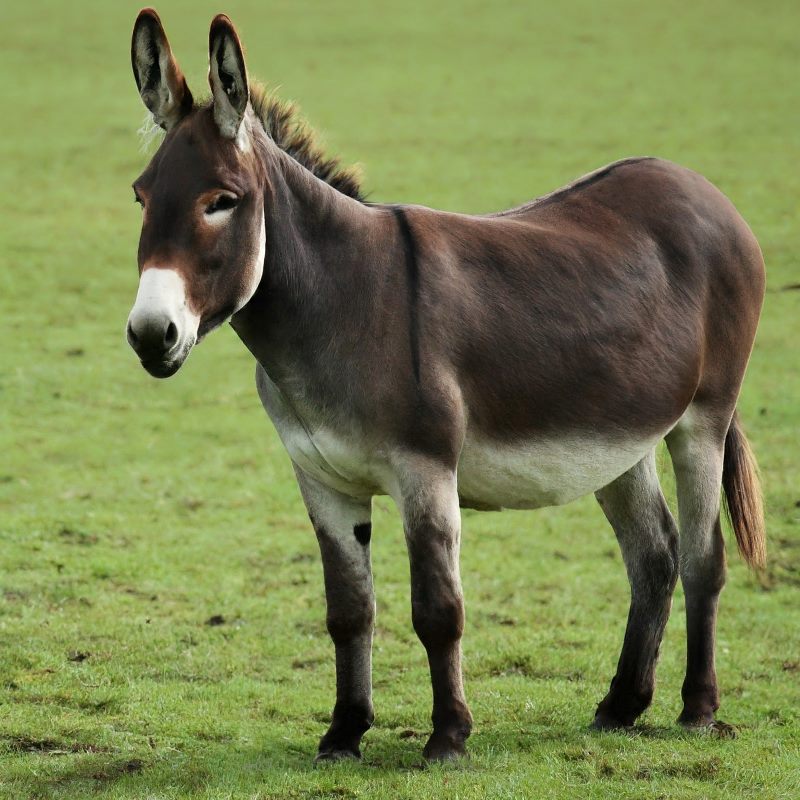
10. Hinny: The Equine Harmony of Donkey and Horse
The Hinny, a lesser-known equine hybrid, is the result of crossbreeding between a male horse and a female donkey. While similar to the mule, which is the offspring of a male donkey and a female horse, the Hinny showcases the distinct characteristics that arise when the genetic contributions of the parent species are reversed.
Physically, Hinnies typically display a smaller size compared to mules, with a body shape and coat coloration that falls between that of horses and donkeys. Bred for their work capabilities and unique attributes, Hinnies represent another facet of the diverse equine hybrids that can emerge through selective breeding. Their existence highlights the intricate interplay of genetics within the equine family, resulting in animals with a blend of traits from both parent species.
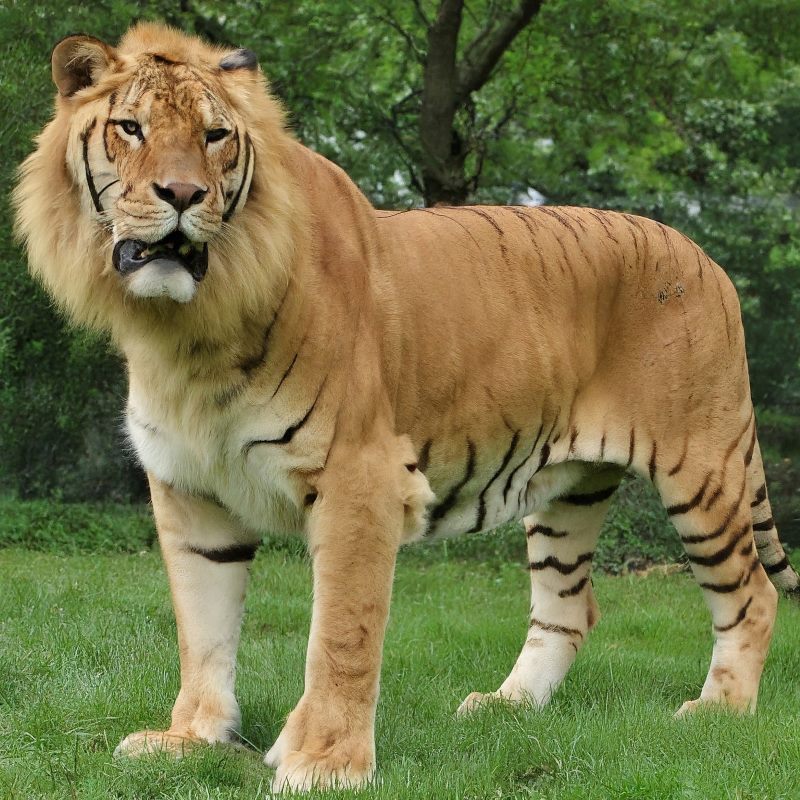
11. Liger: The Majestic Blend of Tiger and Lion
The Liger, a true giant among big cats, is the hybrid offspring of a male lion (Panthera leo) and a female tiger (Panthera tigris). Known for their impressive size, Ligers hold the title of the largest big cats in the world, surpassing the size of their parent species.
Physically, Ligers exhibit a combination of traits, including the mane of a lion and the stripes of a tiger. Their size, a result of hybrid vigor, is often much larger than that of their parents. While Ligers are awe-inspiring in their stature, it’s essential to note that they are a man-made hybrid, as lions and tigers inhabit different continents and would not naturally encounter each other in the wild. The existence of Ligers showcases the capacity for humans to create unique and awe-inspiring animals through selective breeding.

12. Tigon: The Majestic Blend of Lion and Tiger (Reverse Cross)
The Tigon, also known as a tiglon or tion, is the hybrid offspring resulting from the crossbreeding of a male tiger and a female lion. Similar to ligers, tigons exhibit a unique combination of characteristics from both parent species, creating a creature with a distinct appearance and temperament.
Physically, Tigons often display a mix of features, including the stripes of a tiger and the mane of a lion. While tigons are smaller than ligers, they still represent a noteworthy example of interspecific breeding within the big cat family. Like ligers, tigons are a man-made hybrid, as the natural habitats of lions and tigers do not typically overlap. Their existence adds a fascinating layer to the exploration of hybrid animals and the diverse outcomes that can arise through intentional breeding.
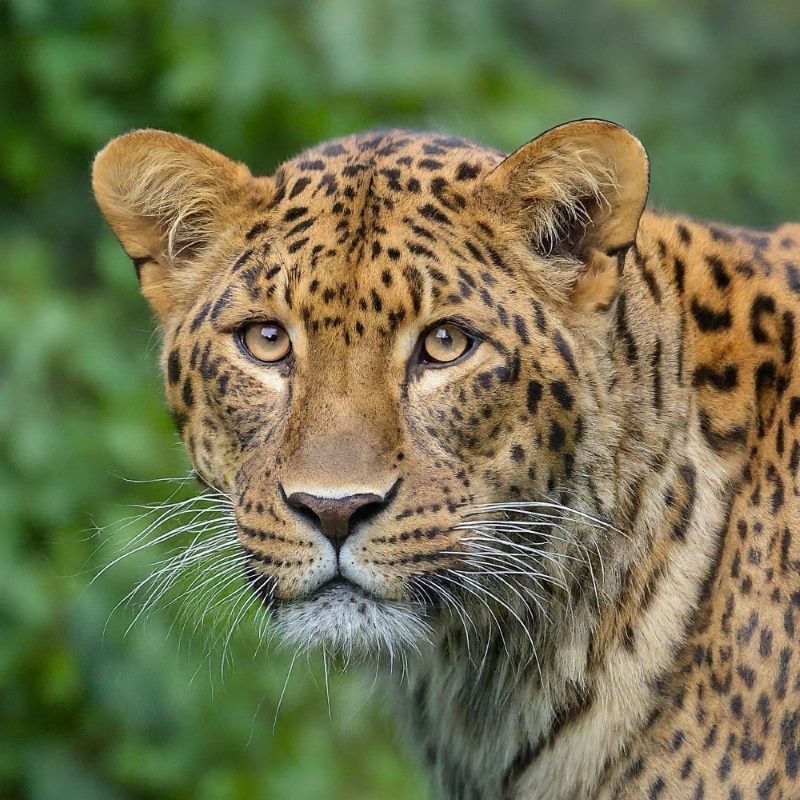
13. Leopon: The Majestic Blend of Lion and Leopard
The Leopon is a captivating hybrid resulting from the crossbreeding of a male leopard (Panthera pardus) and a female lion. With its unique combination of spots and mane, the Leopon represents a striking fusion of characteristics from two big cat species.
Physically, Leopons often exhibit a body shape and size that falls between that of lions and leopards, with a coat featuring both spots and a modest mane. Bred primarily for their appearance, Leopons serve as a testament to the diversity that can emerge through selective breeding within the big cat family. While they are relatively rare in the wild, their presence in captivity adds to the allure of hybrid animals and the creative possibilities that arise when different big cat species are brought together.
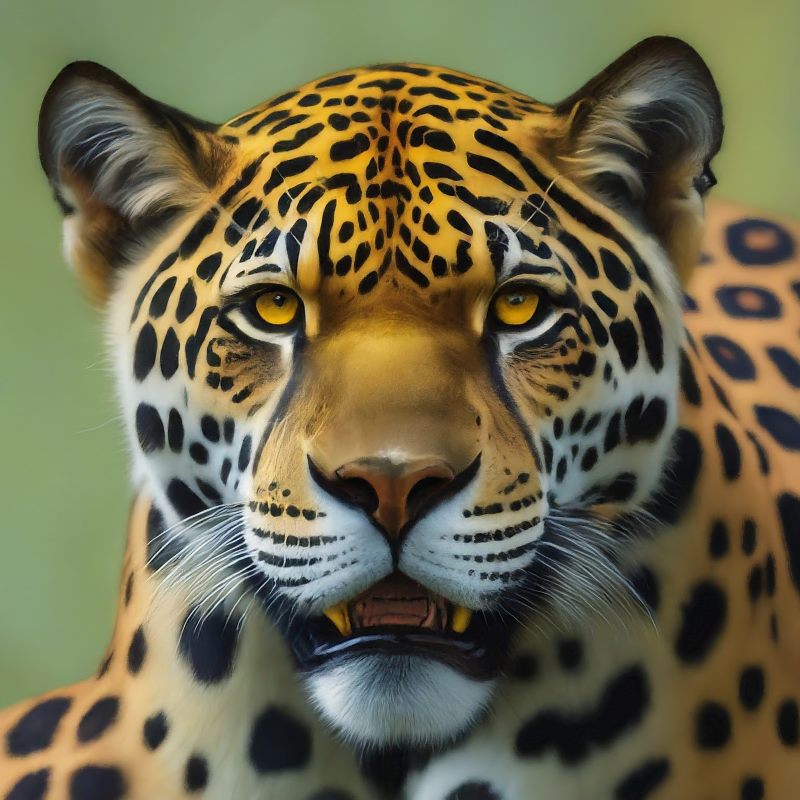
14. Jaglion: The Enigmatic Blend of Lion and Jaguar
The Jaglion, a rare and captivating hybrid, is the result of the crossbreeding of a male lion and a female jaguar (Panthera onca). With its unique combination of size, coloration, and markings, the Jaglion showcases the fascinating outcomes that can arise from the interbreeding of big cat species.
- Size: They are typically smaller than lions but larger than jaguars, ranging from 6 to 8 feet in length and weighing up to 400 pounds.
- Coat: Their coats can vary greatly, with patterns resembling either of their parents. Some have spots like jaguars, while others have rosettes like lions, and some even have a combination of both. Colors can range from tawny like lions to reddish-brown like jaguars.
- Features: They often have a head shape more like a jaguar, with a broader jaw and shorter snout than a lion. Their ears are more rounded than a lion’s and may be spotted.
- The first documented Jaglion was born in 1986 at a wildlife sanctuary in Arkansas.

15. Savannah Cat: The Domestic Elegance of Cat and African Serval
The Savannah Cat is a hybrid resulting from the crossbreeding of a domestic cat (Felis catus) and an African serval (Leptailurus serval). With its striking appearance and unique combination of traits, the Savannah Cat has gained popularity as a distinctive and exotic feline companion.
Physically, Savannah Cats often display a sleek and graceful build reminiscent of the serval, combined with the domestic cat’s familiar features. Bred for their striking spotted coat and friendly demeanor, Savannah Cats showcase the creative possibilities that emerge through intentional crossbreeding efforts within the feline family. While their presence in the wild is nonexistent, the popularity of Savannah Cats in domestic settings underscores the human fascination with creating animals that exhibit a blend of traits from different species.
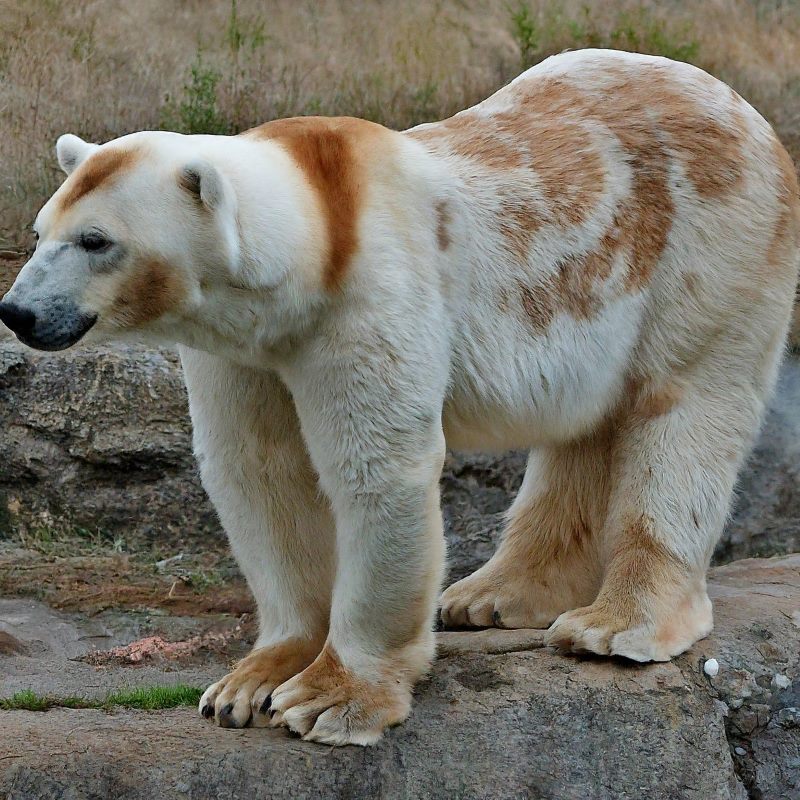
16. Grolar Bear: The Arctic Fusion of Polar Bear and Brown Bear
The Grolar Bear, also known as a Pizzly Bear, is a rare and remarkable hybrid resulting from the interbreeding of a polar bear (Ursus maritimus) and a brown bear (Ursus arctos). With its unique combination of characteristics, the Grolar Bear represents an intriguing example of interspecific breeding within the bear family.
Physically, Grolar Bears often display a mix of features, including the lighter coloration of a polar bear and the build of a brown bear. Bred primarily for their novelty, Grolar Bears serve as a testament to the adaptability of bears and the potential for genetic exchange between closely related species. While their occurrence in the wild is exceptionally rare, the presence of Grolar Bears adds a fascinating layer to the exploration of hybrid animals and the dynamic interactions between different bear species.
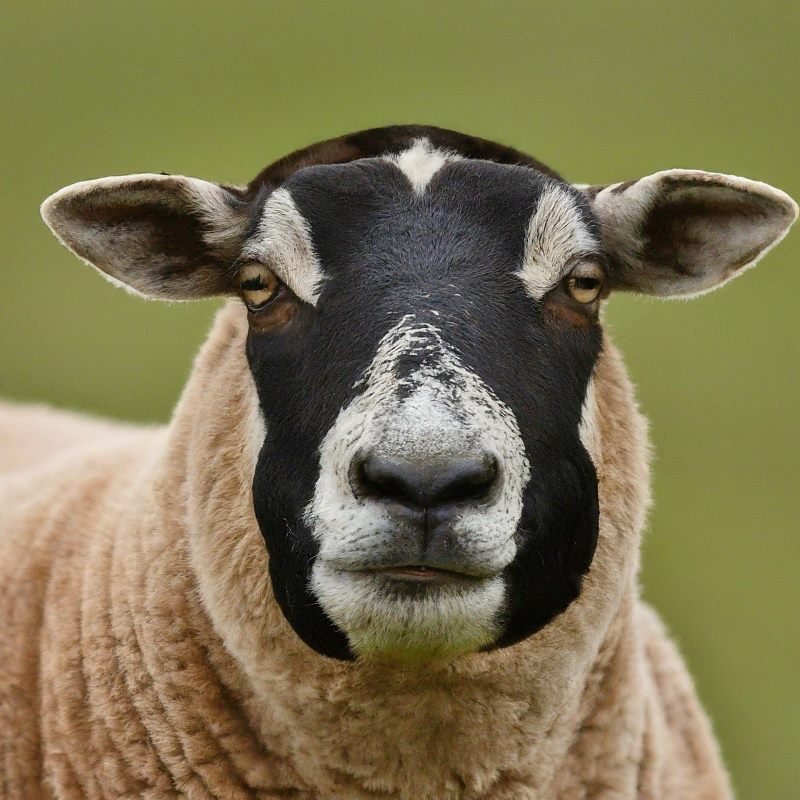
17. Geep: The Adorable Fusion of Goat and Sheep
The Geep, also known as a Shoat or Shoep, is a charming hybrid resulting from the crossbreeding of a goat (Capra aegagrus hircus) and a sheep (Ovis aries). This unique fusion of two domesticated ruminant species showcases the creative outcomes that can arise when genetic material from goats and sheep combines.
Physically, Geeps often exhibit a combination of features, including a body shape and size that falls between that of goats and sheep, as well as a coat that may feature elements of both parent species. While Geeps are typically bred for their novelty and appearance, they also provide insights into the intricate genetics of domesticated ruminants. Their existence adds a touch of whimsy to the world of hybrid animals, highlighting the unexpected beauty that can emerge from the intentional blending of traits.
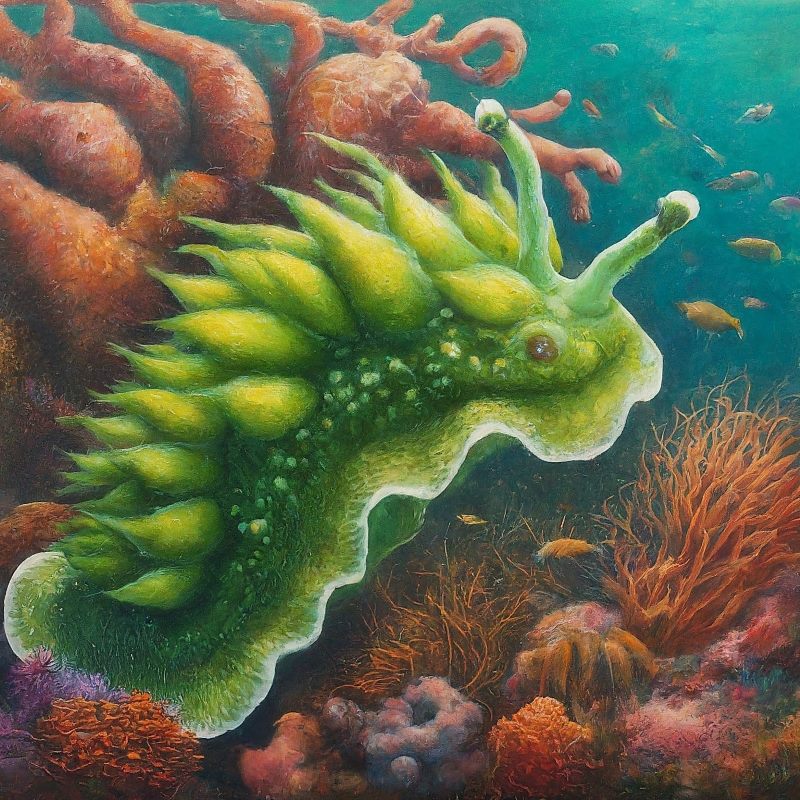
18. Green Sea Slug: The Marvelous Blend of Algae and Slug
The Green Sea Slug, also known as Elysia chlorotica, is a captivating example of a natural hybrid resulting from the incorporation of algae into its cells. Through a fascinating process called kleptoplasty, these sea slugs acquire and maintain functional chloroplasts from the algae they consume, allowing them to harness solar energy for photosynthesis.
Physically, Green Sea Slugs often display a vibrant green coloration, a result of the chloroplasts within their cells. This unique adaptation not only provides the slugs with a sustainable energy source but also serves as a remarkable example of symbiosis between different organisms. The Green Sea Slug showcases the incredible diversity of life in marine environments and the unexpected ways in which organisms can adapt and thrive through mutualistic relationships.
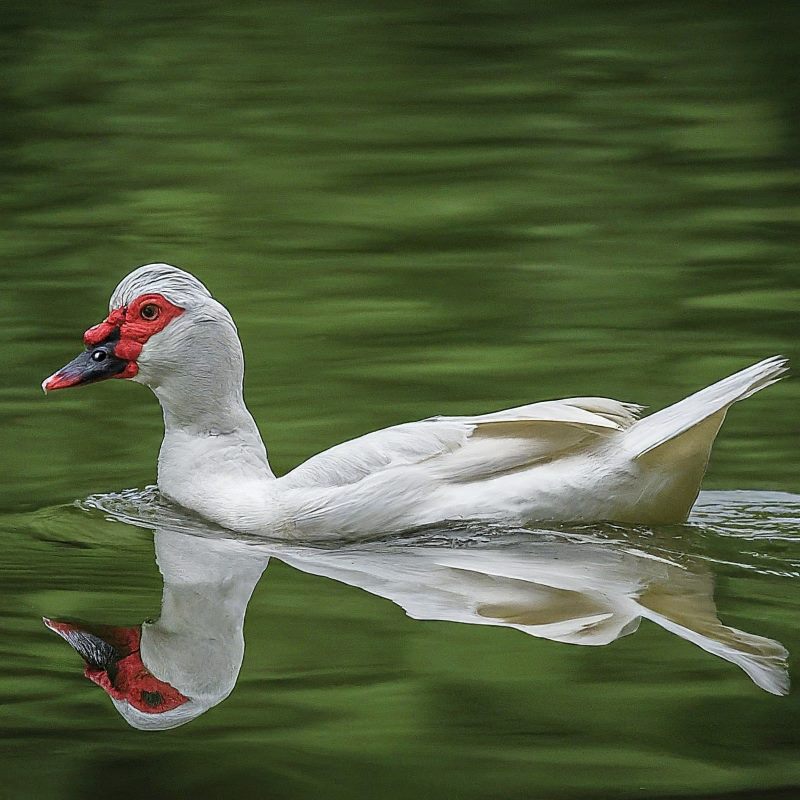
19. Mulard: The Culinary Fusion of Pekin and Muscovy Duck
The Mulard, also known as a Moulard, is a hybrid resulting from the crossbreeding of a Pekin duck (Anas platyrhynchos) and a Muscovy duck (Cairina moschata). Bred primarily for culinary purposes, Mulards are valued for their high-quality meat, making them a popular choice in the world of duck farming.
Physically, Mulards often exhibit a combination of features, including a size and build that falls between that of Pekin and Muscovy ducks. Bred for their meat production, Mulards represent an intentional blending of traits to create a hybrid with desirable culinary qualities. Their presence in the agricultural landscape adds a practical dimension to the world of hybrid animals, showcasing how intentional crossbreeding efforts can be directed toward meeting specific human needs.
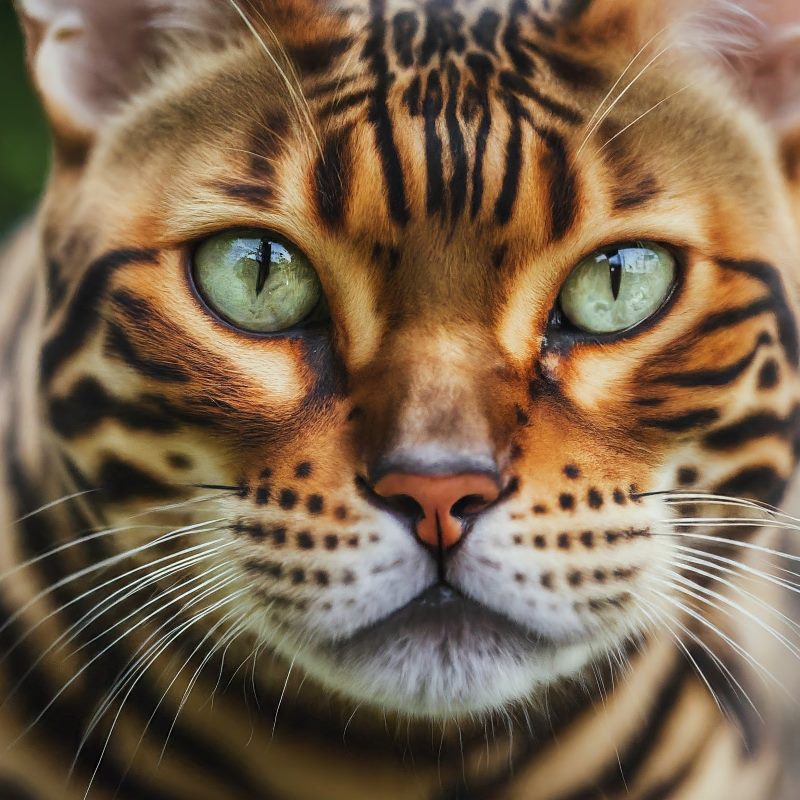
20. Bengal Cat: The Domestic Elegance of Asian Leopard Cat and Domestic Cat
The Bengal Cat is a captivating hybrid resulting from the crossbreeding of an Asian leopard cat (Prionailurus bengalensis) and a domestic cat (Felis catus). Known for their striking spotted or marbled coat patterns, Bengal Cats have gained popularity as exotic and visually appealing domestic companions. Bengal cats are known for their:
- Striking spotted coat: Their coats come in a variety of patterns, including rosettes, marble, and snow, resembling miniature leopards.
- Large, expressive eyes: Their mesmerizing eyes can be green, gold, hazel, or blue, adding to their captivating beauty.
- Muscular build: They are athletic and powerful cats, enjoying climbing, jumping, and exploring their surroundings.
- Playful and intelligent personality: They are known for their energetic and curious nature, requiring plenty of mental and physical stimulation.
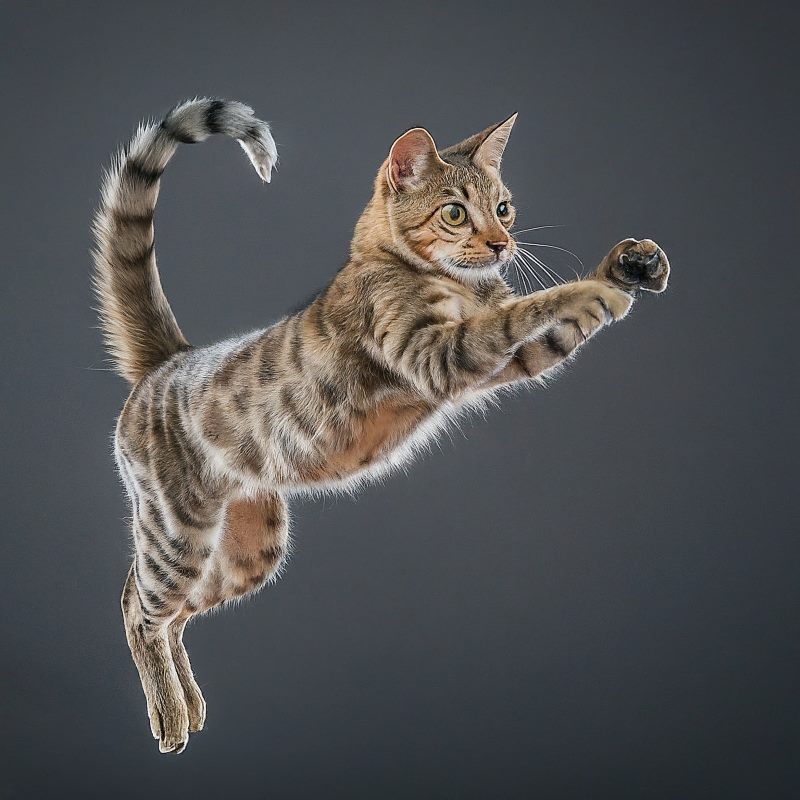
21. Cheetoh: The Sleek Fusion of Bengal Cat and Ocicat
The Cheetoh is a captivating hybrid resulting from the crossbreeding of a Bengal cat (Prionailurus bengalensis) and an Ocicat (Felis catus). This intentional fusion of domestic cat breeds creates a visually striking and energetic feline companion.
Physically, Cheetohs often exhibit a sleek and muscular build, combined with a coat that features spots or marbled patterns reminiscent of both parent breeds. Bred for their unique appearance and active personality, Cheetohs showcase the creative possibilities that arise through intentional crossbreeding efforts within the feline family. While their presence in the wild is nonexistent, the popularity of Cheetohs in domestic settings adds a touch of exotic elegance to the world of hybrid cats.
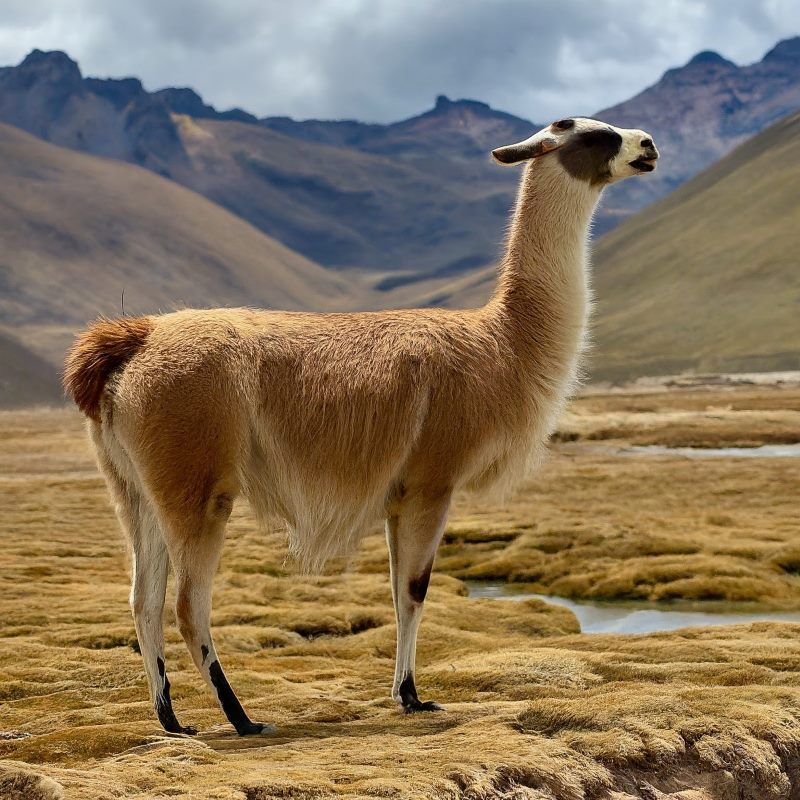
22. Humpless Llama: The Unique Variation of Domestic Llama
The Humpless Llama, as the name suggests, is a variation of the domestic llama (Lama glama) that lacks the characteristic hump found in traditional llamas. While not a hybrid in the traditional sense, the humpless llama represents a unique variation that has emerged through selective breeding.
Physically, Humpless Llamas exhibit the general build and size of traditional llamas but lack the hump on their backs. This variation has been intentionally bred to meet specific preferences, as some farmers find the humpless trait more aesthetically pleasing or practical for certain uses. The existence of Humpless Llamas adds a fascinating layer to the world of domesticated animals, showcasing how intentional breeding efforts can shape the characteristics of even well-established breeds.
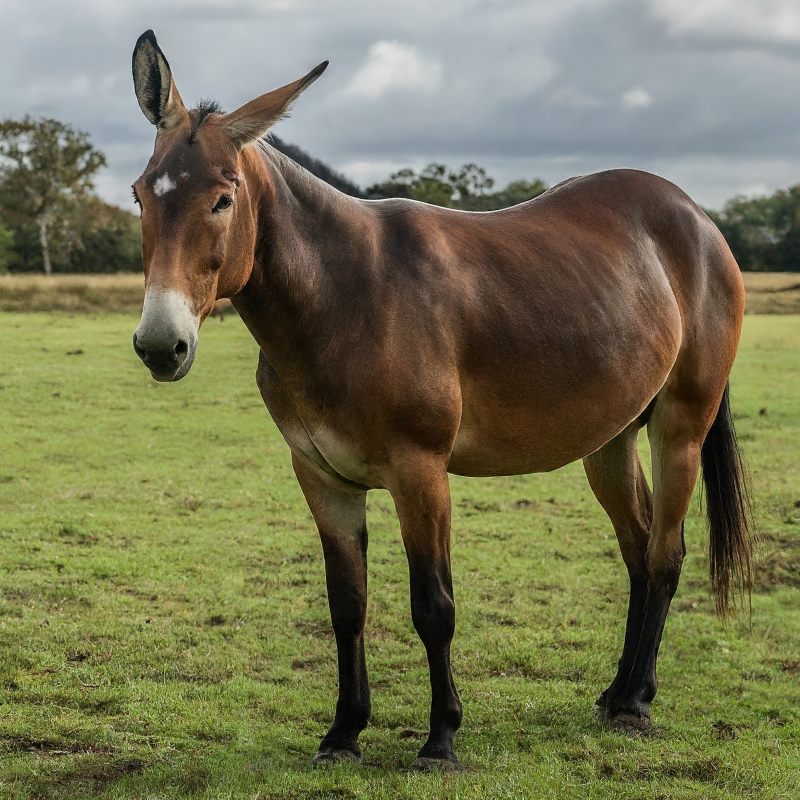
23. Mule: The Iconic Fusion of Donkey and Horse
The Mule is one of the most well-known and iconic hybrid animals, resulting from the crossbreeding of a male donkey (Equus africanus asinus) and a female horse (Equus ferus caballus). Renowned for their strength, intelligence, and hardiness, mules have played significant roles in agriculture, transportation, and various human activities throughout history.
Physically, Mules often exhibit a size and build that falls between that of horses and donkeys, with a distinctive set of long ears. Bred primarily for their work capabilities, mules represent an intentional blending of traits to create a hybrid with desirable qualities. Their presence in various human endeavors underscores the practical applications of intentional crossbreeding efforts, showcasing how mules have become invaluable companions in agriculture and beyond.
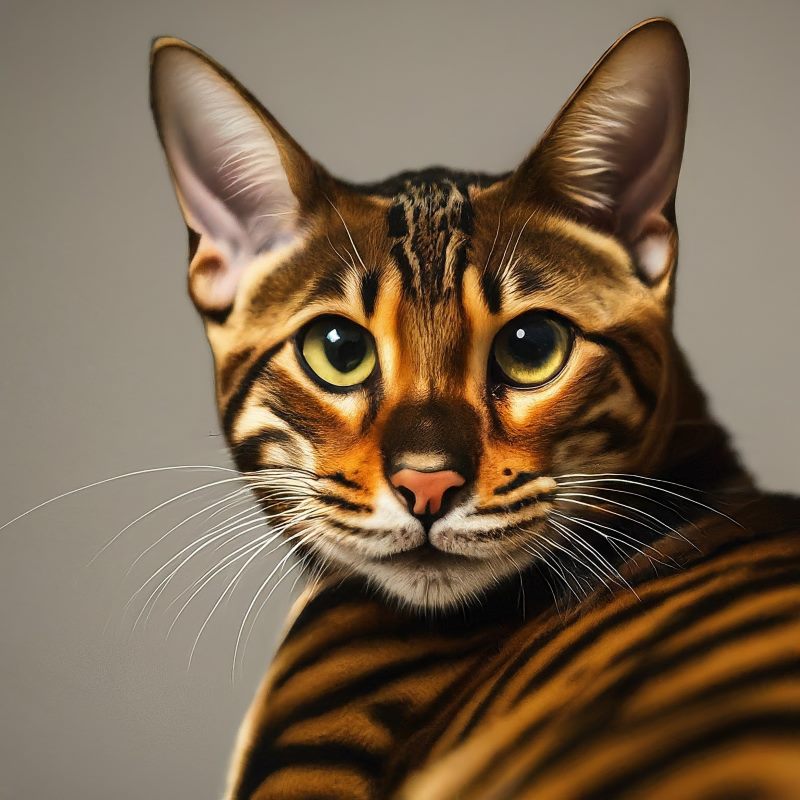
24. Toyger: The Domestic Elegance of Bengal Cat and Domestic Cat
The Toyger is a captivating hybrid resulting from the intentional crossbreeding of a Bengal cat (Prionailurus bengalensis) and a domestic cat (Felis catus). Bred for its resemblance to a miniature tiger, the Toyger is known for its striking coat patterns and playful demeanor.
Physically, Toygers often exhibit a sleek and muscular build, combined with a coat that features bold, dark stripes reminiscent of a tiger. Bred for their unique appearance and friendly temperament, Toygers showcase the creative possibilities that arise through intentional crossbreeding efforts within the feline family. While their presence in the wild is nonexistent, the popularity of Toygers in domestic settings adds a touch of exotic elegance to the world of hybrid cats.

25. Wolfdog: The Enigmatic Fusion of Wolf and Domestic Dog
The Wolfdog, also known as a wolf hybrid, is a captivating hybrid resulting from the crossbreeding of a gray wolf (Canis lupus) and a domestic dog (Canis lupus familiaris). These hybrids can display a wide range of physical and behavioral traits, depending on the proportion of wolf and dog genetics in their makeup.
Wolfdogs are hybrid animals resulting from the breeding of a domestic dog and a gray wolf. Their appearance can vary greatly depending on the specific breeds of dog used in the crossbreeding, but they often have:
- Thick fur: Like wolves, wolfdogs have thick fur that can be various colors, including gray, black, white, and brown.
- Pointed ears: Similar to wolves, their ears are usually erect and triangular in shape.
- Bushy tails: Their tails are typically bushy and held high, resembling those of wolves.
- Strong build: They tend to have a muscular build and powerful legs, reflecting their wolf heritage.
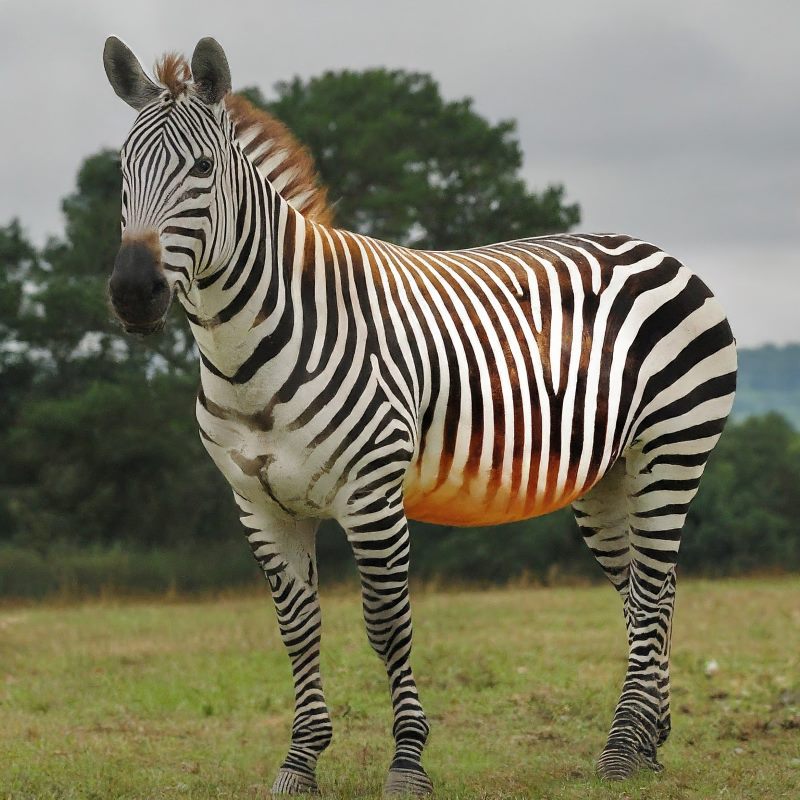
26. Zebroid: The Equine Fusion of Zebra and Horse
The Zebroid is a captivating hybrid resulting from the crossbreeding of a zebra (Equus zebra) and a horse (Equus ferus caballus). This intentional fusion of two equine species creates a creature with a distinctive appearance, showcasing the potential for blending traits from different but related animals.
Physically, Zebroids often exhibit a size and build that falls between that of zebras and horses, with a coat featuring a mix of stripes and solid patches. Bred for their unique appearance and, in some cases, specific work capabilities, Zebroids represent an intentional blending of traits to create hybrids with desirable qualities. While their occurrence in the wild is exceedingly rare, the presence of Zebroids in captivity adds a touch of wild elegance to the world of hybrid animals.
Summary
In conclusion, the world of hybrid animals is a fascinating and diverse realm, where intentional crossbreeding efforts and natural occurrences result in creatures that showcase the creative possibilities within the animal kingdom. From majestic big cat hybrids to charming domestic feline variations, each hybrid has its own unique characteristics and story. While the intentional creation of hybrids raises ethical considerations and requires responsible breeding practices, the existence of these animals serves as a testament to the intricate interplay of genetics and the remarkable outcomes that can arise when different species come together in unexpected ways.
(FAQs) About Hybrid Animals Blends
- What is a hybrid animal?
- A hybrid animal is the offspring resulting from the mating of individuals from two different species. This can occur naturally or through intentional human intervention.
- Are hybrid animals common in the wild?
- True hybrids, resulting from the crossbreeding of distinct species, are relatively rare in the wild due to biological, geographical, and behavioral barriers. However, some hybridization occurs in captivity or as a result of environmental changes.
- How are hybrid animals created?
- Hybrid animals can be created through intentional breeding by mating individuals from different species. In some cases, artificial insemination may be used to overcome natural barriers to reproduction.
- What are some examples of natural hybridization in the wild?
- Natural hybridization occurs in various plant and animal species, such as certain frogs, plants, and butterflies. It is less common among mammals due to factors like different mating behaviors and habitats.
- Are hybrid animals sterile?
- Sterility in hybrids depends on the species involved. Some hybrids, like mules (horse and donkey cross), are often sterile, while others, like ligers (lion and tiger cross), may be fertile but face reproductive challenges.
- Why do humans create hybrid animals?
- Humans create hybrid animals for various reasons, including agricultural purposes (improved traits for meat or milk production), research, conservation efforts, and sometimes for aesthetic or novelty reasons.
- What ethical considerations surround the creation of hybrid animals?
- Ethical concerns arise from potential health issues, the welfare of the animals involved, and the impact on biodiversity. Responsible breeding practices and consideration of the well-being of the hybrids are crucial to addressing these concerns.
- Do hybrid animals occur in the wild due to climate change or habitat loss?
- While habitat loss and climate change can lead to changes in species distributions and interactions, true hybridization resulting from these factors is limited. Human-induced habitat changes may bring different species into contact, increasing the chances of hybridization.
- Can hybrid animals survive in the wild?
- The survival of hybrid animals in the wild depends on various factors, including their fitness for the environment, competition with parent species, and the stability of the ecosystem. Some hybrids may thrive, while others may face challenges.
- Are hybrid animals genetically modified organisms (GMOs)?
- No, hybrid animals and GMOs are distinct concepts. Hybridization involves the natural or intentional breeding of individuals from different species, while GMOs result from genetic engineering in a laboratory setting.
- Are hybrid animals legally protected?
- Legal protection for hybrid animals varies depending on regional regulations and conservation status. Some hybrids may be protected if they are considered endangered or if their conservation is a priority.
- Can hybrid animals interbreed with their parent species?
- In some cases, hybrid animals can interbreed with one or both parent species. However, the fertility and success of such pairings can vary, and reproductive barriers may exist.
- Are there any conservation efforts focused on hybrid animals?
- Conservation efforts generally prioritize preserving the genetic integrity of species. However, in cases where hybridization occurs naturally, conservation strategies may be adapted to address the evolving dynamics of species interactions.
- Can hybrid animals be found in zoos or wildlife reserves?
- Yes, some hybrid animals can be found in captivity, particularly in zoos or wildlife reserves. These settings may showcase hybrid animals for educational purposes or as part of conservation breeding programs.
- What is the significance of hybrid animals in scientific research?
- Hybrid animals can provide insights into genetic compatibility, adaptation, and species interactions. Studying hybrids may contribute to a better understanding of evolutionary processes and the potential for species to adapt to changing environments.

94% of pet owners say their animal pal makes them smile more than once a day. In 2007, I realized that I was made for saving Animals. My father is a Vet, and I think every pet deserves one. I started this blog, “InPetCare”, in 2019 with my father to enlighten a wider audience.
